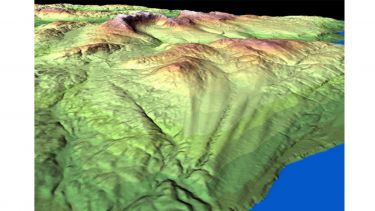Crag-and-tail
A landform consisting of a rock hill and tapering ridge, which is produced by selective erosion and deposition beneath an ice sheet.

What we know
They range in scale from tens of metres to kilometres in length, with the tail pointing in the down-ice direction.
The hill, or crag, is usually of strong rock that has resisted glacial erosion and forms an obstruction to the ice producing a "pressure shadow" in its lee.
This extends in a down-ice direction in proportion to the ice velocity and thickness and creates a gradually tapering zone of minimal erosion or even a cavity.
Although often similar in appearance there are two types of crag-and-tail dependent upon the composition of the tail and processes that led to its formation.
Erosional crag-and-tails consist of a highly resistant rock crag that protected less resistant bedrock in its lee from the full force of glacial erosion. The tail in this type consists of bedrock.
Depositional crag-and-tails were formed by the inflow of glacial sediments into a cavity produced in the lee of the rock obstruction, and hence have tails composed of unconsolidated sediments. These tend to be smaller in scale.
In practice it is hard to differentiate between these two types as they may both have glacial sediments at the surface of the tail.
The significance of these landforms is that in common with subglacial bedforms they record former directions of ice flow and indicate that the ice was at pressure melting point, which permitted sliding at the bed.
